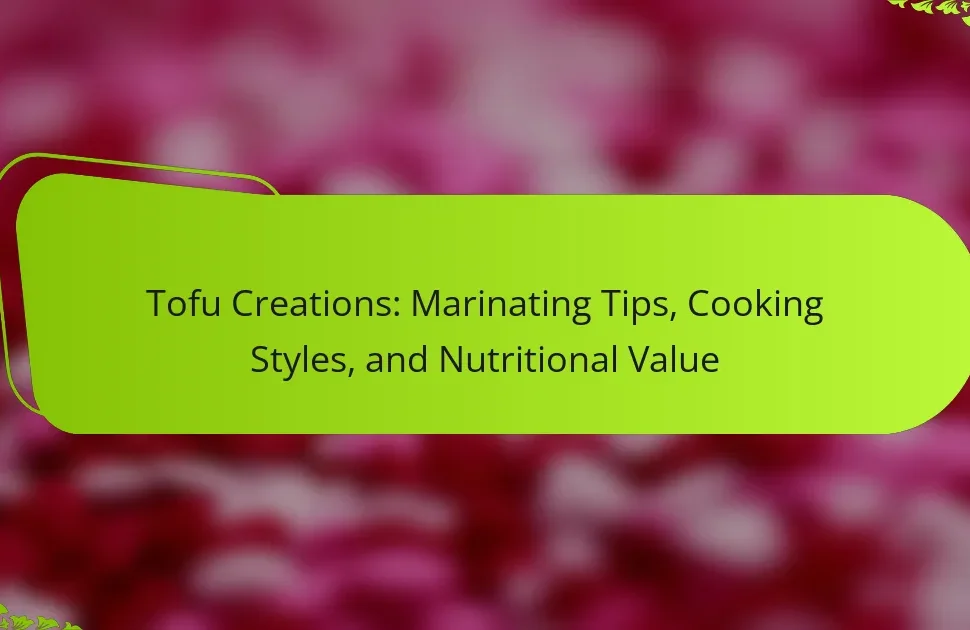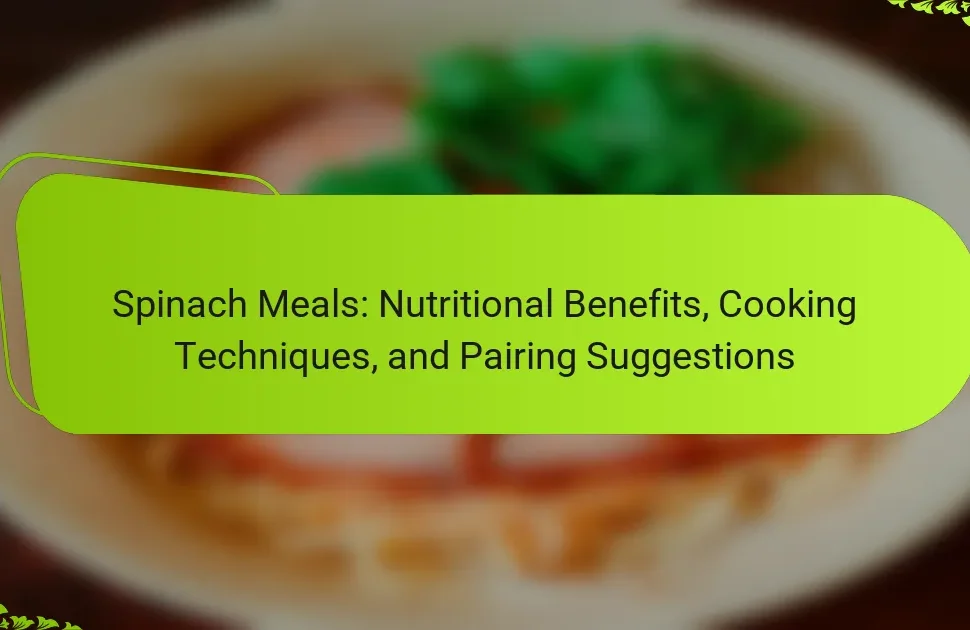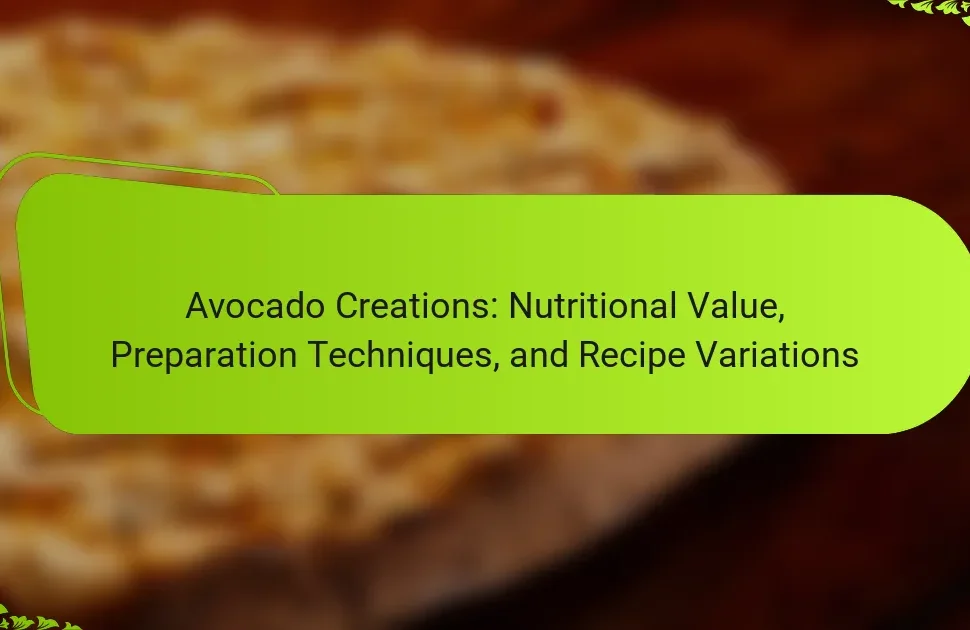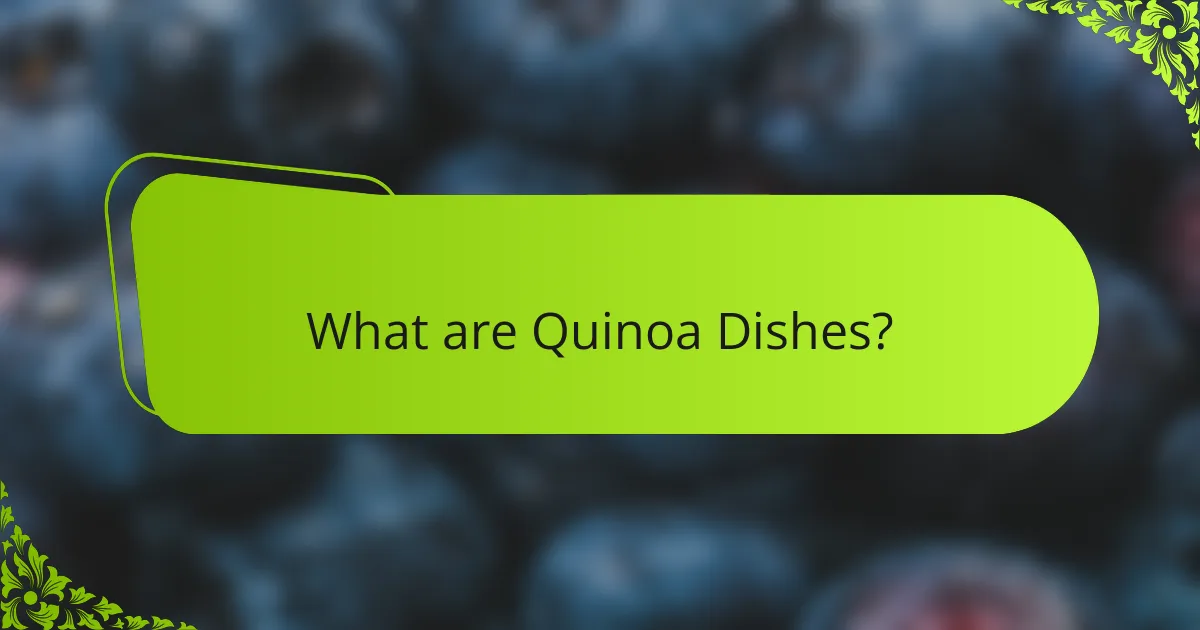
What are Quinoa Dishes?
Quinoa dishes are meals that primarily feature quinoa as the main ingredient. Quinoa is a nutrient-dense grain-like seed, rich in protein and fiber. These dishes can be served hot or cold and often incorporate various vegetables, legumes, and spices. Common quinoa dishes include salads, bowls, and casseroles. Quinoa’s versatility allows it to be used in both savory and sweet preparations. According to the Whole Grains Council, quinoa is a complete protein, containing all nine essential amino acids. This makes it a popular choice for vegetarian and vegan diets.
How is quinoa prepared for various dishes?
Quinoa is prepared by rinsing, cooking, and seasoning it for various dishes. First, rinse quinoa under cold water to remove saponins, which can cause bitterness. Next, combine one part quinoa with two parts water or broth in a pot. Bring the mixture to a boil, then reduce heat to low and cover. Cook for about 15 minutes until the liquid is absorbed. Fluff the quinoa with a fork after cooking.
Quinoa can be used in salads, soups, and side dishes. For salads, mix cooked quinoa with vegetables and dressing. In soups, add it during the last 10 minutes of cooking for added texture. As a side dish, season it with herbs or spices to complement the main course.
This method ensures that quinoa is nutritious and versatile, making it suitable for various culinary applications.
What are the essential cooking techniques for quinoa?
The essential cooking techniques for quinoa include rinsing, boiling, and fluffing. Rinsing quinoa removes its natural coating, called saponin, which can impart a bitter taste. To cook quinoa, combine one part quinoa with two parts water or broth in a pot. Bring the mixture to a boil, then reduce the heat and cover the pot. Simmer for about 15 minutes until the quinoa absorbs the liquid. After cooking, let it sit covered for five minutes to steam. Finally, fluff the quinoa with a fork to separate the grains. These techniques ensure a light and fluffy texture, making quinoa a versatile ingredient in various dishes.
What variations exist in quinoa preparation?
Quinoa can be prepared in various ways, each offering unique flavors and textures. Common methods include boiling, toasting, and baking. Boiling quinoa involves simmering it in water until it becomes fluffy. Toasting enhances its nutty flavor by cooking it in a dry pan before boiling. Baking quinoa allows it to be incorporated into casseroles or baked dishes. Additionally, quinoa can be used in salads, soups, or as a side dish. Each preparation method retains quinoa’s nutritional benefits while providing diverse culinary options.
What nutritional benefits do quinoa dishes provide?
Quinoa dishes provide numerous nutritional benefits. They are a complete source of protein, containing all nine essential amino acids. Quinoa is rich in dietary fiber, which aids digestion and promotes satiety. It also contains essential vitamins and minerals, including magnesium, phosphorus, and iron. Quinoa is gluten-free, making it suitable for those with gluten intolerance. One cup of cooked quinoa has about 222 calories, 8 grams of protein, and 5 grams of fiber. The high antioxidant content in quinoa helps combat oxidative stress. Additionally, quinoa has a low glycemic index, which supports stable blood sugar levels. These attributes make quinoa dishes a nutritious addition to a balanced diet.
How does quinoa compare to other grains in terms of nutrition?
Quinoa offers superior nutrition compared to many other grains. It is a complete protein, containing all nine essential amino acids. In contrast, most grains lack one or more of these amino acids. Quinoa also has a higher fiber content than rice or wheat. This promotes better digestion and satiety. Additionally, quinoa is rich in vitamins and minerals, such as magnesium, iron, and B vitamins. For example, one cup of cooked quinoa provides about 30% of the daily recommended intake of magnesium. This nutrient density makes quinoa a healthier choice overall.
What specific health benefits are associated with quinoa consumption?
Quinoa consumption offers several health benefits. It is a complete protein, containing all nine essential amino acids. This makes it an excellent choice for vegetarians and vegans. Quinoa is also high in fiber, promoting digestive health and aiding in weight management. It has a low glycemic index, which helps regulate blood sugar levels. Additionally, quinoa is rich in antioxidants, which combat oxidative stress in the body. Studies indicate that quinoa may reduce inflammation and lower the risk of chronic diseases. Its nutrient profile includes important vitamins and minerals, such as magnesium, iron, and B vitamins. Overall, quinoa is a nutritious addition to a balanced diet.
Why are quinoa dishes popular in various cuisines?
Quinoa dishes are popular in various cuisines due to their nutritional value and versatility. Quinoa is a complete protein, containing all nine essential amino acids. This makes it an excellent choice for vegetarians and vegans. Additionally, quinoa is gluten-free, appealing to those with gluten sensitivities. Its mild, nutty flavor allows it to complement a wide range of ingredients and spices. Quinoa can be used in salads, soups, and main dishes, making it adaptable to different culinary traditions. The grain has gained global recognition since it was declared a superfood by the United Nations in 2013. As a result, it has been incorporated into diverse recipes worldwide, enhancing its popularity across cultures.
What cultural significance does quinoa hold in different regions?
Quinoa holds significant cultural importance in the Andean regions of South America, particularly in countries like Peru and Bolivia. It has been cultivated for over 5,000 years and is considered a staple food among indigenous communities. Quinoa is often referred to as “the mother grain” by the Inca civilization, symbolizing its vital role in their diet and agriculture. In these regions, quinoa is deeply integrated into traditional rituals and celebrations, often used in offerings to Pachamama, the Earth Mother.
In contrast, quinoa’s significance has evolved in Western cultures, where it is embraced as a superfood. Its high nutritional value, including protein and essential amino acids, has made it popular among health-conscious consumers. This shift has led to increased global demand, impacting traditional farming practices in its native regions.
Overall, quinoa serves as a bridge between ancient agricultural traditions and modern dietary trends, reflecting its diverse cultural significance across different regions.
How has quinoa’s popularity evolved over time?
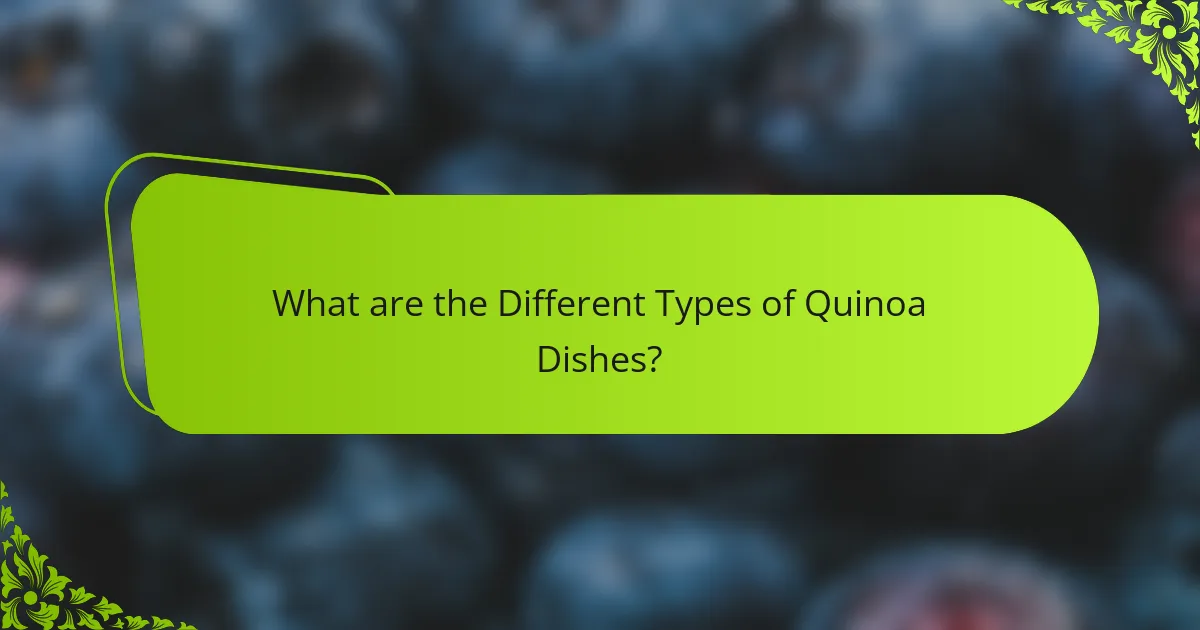
What are the Different Types of Quinoa Dishes?
Quinoa’s popularity has significantly increased since the early 2000s. Initially, it was primarily consumed in South America. By the 2010s, it gained global recognition as a superfood. The United Nations declared 2013 as the International Year of Quinoa, boosting its profile. Health trends highlighting gluten-free and high-protein diets contributed to its rise. Quinoa’s versatility in various dishes also enhanced its appeal. Today, it is widely available in grocery stores and restaurants. Its nutritional benefits have made it a staple in health-conscious diets worldwide.
What are some popular savory quinoa dishes?
Popular savory quinoa dishes include quinoa salad, quinoa stir-fry, and quinoa chili. Quinoa salad often combines cooked quinoa with vegetables and dressing. Quinoa stir-fry typically features quinoa sautéed with various vegetables and sauces. Quinoa chili is a hearty dish made with quinoa, beans, and spices. These dishes are nutritious and versatile. They can cater to different dietary preferences. Quinoa is a complete protein, making it a healthy choice.
How can quinoa be incorporated into salads?
Quinoa can be incorporated into salads by cooking it and mixing it with fresh vegetables. First, rinse the quinoa to remove its natural coating. Then, cook it in water or broth for about 15 minutes until fluffy. After cooking, let it cool before adding it to the salad. Combine the quinoa with ingredients like cucumbers, tomatoes, and bell peppers for a refreshing dish. Adding a dressing of olive oil and lemon enhances the flavor. Quinoa adds protein and fiber to the salad, making it a nutritious option. It is gluten-free and suitable for various diets.
What are unique ways to use quinoa in main courses?
Quinoa can be used in various unique ways in main courses. One way is to create quinoa-stuffed bell peppers. This dish combines cooked quinoa with vegetables and spices, then bakes it in halved bell peppers. Another unique use is quinoa risotto. By substituting rice with quinoa, a creamy and nutritious risotto can be made using broth, herbs, and seasonal vegetables. Quinoa can also be incorporated into tacos. Using quinoa as a filling, alongside beans and toppings, offers a protein-rich alternative. Another idea is quinoa-based burgers. Mixing quinoa with beans, vegetables, and spices creates a hearty vegetarian burger option. Quinoa can also be used in grain bowls, combining it with greens, roasted vegetables, and a dressing for a nutritious meal. Lastly, quinoa can be added to curries, providing texture and nutrition while absorbing flavors. These methods highlight quinoa’s versatility and nutritional benefits in main courses.
What are some popular sweet quinoa dishes?
Popular sweet quinoa dishes include quinoa pudding, quinoa breakfast bowls, and quinoa cookies. Quinoa pudding is a creamy dessert made with cooked quinoa, milk, and sweeteners like honey or maple syrup. Quinoa breakfast bowls often feature quinoa topped with fruits, nuts, and yogurt, providing a nutritious start to the day. Quinoa cookies combine quinoa flour with ingredients like chocolate chips or dried fruits, offering a healthy snack option. These dishes showcase quinoa’s versatility and ability to absorb flavors, making it a great ingredient for sweet recipes.
How can quinoa be used in desserts?
Quinoa can be used in desserts as a versatile ingredient. It can be cooked and sweetened to create puddings. Quinoa can also be blended into smoothies for added nutrition. Additionally, it can be incorporated into baked goods like cookies and brownies. Quinoa flour serves as a gluten-free alternative in various recipes. The protein and fiber content of quinoa enhances the nutritional profile of desserts. Using quinoa in desserts can provide a unique texture and flavor. This approach aligns with health-conscious cooking trends.
What are the benefits of using quinoa in breakfast recipes?
Quinoa offers numerous benefits when used in breakfast recipes. It is a complete protein, containing all nine essential amino acids. This makes it an excellent choice for a nutritious start to the day. Quinoa is also high in fiber, which aids digestion and promotes satiety. One cup of cooked quinoa provides about 5 grams of dietary fiber. Additionally, quinoa is gluten-free, making it suitable for those with gluten sensitivities. It is rich in vitamins and minerals, including magnesium, iron, and B vitamins. These nutrients contribute to overall health and energy levels. Lastly, quinoa has a low glycemic index, which helps regulate blood sugar levels. This makes it a smart choice for maintaining energy throughout the morning.
What innovative quinoa dishes are emerging in modern cuisine?
Innovative quinoa dishes emerging in modern cuisine include quinoa sushi rolls and quinoa burgers. Quinoa sushi rolls incorporate fresh vegetables and seafood, wrapped in seaweed. This dish offers a gluten-free alternative to traditional sushi. Quinoa burgers combine cooked quinoa with beans and spices, providing a protein-rich vegetarian option. These burgers can be served with various toppings and sauces. Additionally, quinoa salads with unique dressings are gaining popularity. These salads often feature ingredients like roasted vegetables and nuts. Another trend is quinoa bowls, which are customizable with various proteins and vegetables. These dishes highlight quinoa’s versatility and nutritional benefits.
How are chefs creatively using quinoa in gourmet meals?
Chefs are creatively using quinoa in gourmet meals by incorporating it into diverse dishes. They prepare quinoa salads with seasonal vegetables and unique dressings. Quinoa is also used as a base for risottos, enhancing texture and nutrition. Some chefs create quinoa patties, serving them as appetizers or burgers. Quinoa bowls are popular, featuring various toppings and sauces for customization. Additionally, chefs infuse quinoa into desserts, such as puddings and granola bars. This versatility showcases quinoa’s adaptability across different cuisines. Its high protein content and gluten-free nature make it a preferred ingredient in health-conscious gourmet cooking.
What trends are shaping the future of quinoa dishes?

What are Effective Serving Suggestions for Quinoa Dishes?
Quinoa dishes are increasingly influenced by health-conscious eating trends. Consumers are seeking plant-based, gluten-free, and high-protein options. The rise of meal prepping has made quinoa a popular base for nutritious bowls. Sustainability trends are driving interest in locally sourced and organic quinoa. Fusion cuisine is also emerging, as chefs incorporate quinoa into diverse cultural dishes. Additionally, innovative flavors and toppings are being added to enhance the dining experience. These trends reflect a growing awareness of nutrition and culinary creativity in quinoa dishes.
How should quinoa dishes be presented for optimal appeal?
Quinoa dishes should be presented with vibrant colors and contrasting textures for optimal appeal. Using a variety of fresh vegetables enhances visual interest. Garnishes like herbs or edible flowers add a touch of elegance. Serving quinoa in unique bowls or plates can elevate the dining experience. Layering ingredients creates depth and showcases the dish’s components. Arranging food artfully can stimulate appetite and engagement. Studies show that visually appealing meals can enhance perceived taste and enjoyment.
What garnishes enhance the flavor of quinoa dishes?
Fresh herbs like cilantro and parsley enhance quinoa dishes. They add a burst of freshness and brightness. Citrus elements, such as lemon or lime juice, also elevate the flavor profile. These garnishes introduce acidity, balancing the dish’s richness. Nuts and seeds, like toasted almonds or pumpkin seeds, provide crunch and depth. Spices, including paprika or cumin, can add warmth and complexity. Avocado offers creaminess, complementing quinoa’s texture. Lastly, a drizzle of olive oil can enrich the overall taste. These garnishes collectively enhance the flavor and appeal of quinoa dishes.
How can serving sizes be adjusted for different occasions?
Serving sizes can be adjusted based on the occasion’s context and the number of guests. For casual meals, a standard serving is typically 1/2 cup of cooked quinoa per person. For larger gatherings, increase the serving size to 3/4 cup to accommodate more guests. For formal events, consider serving smaller portions, around 1/3 cup, to allow for multiple courses. Adjustments can also depend on the dish’s role; as a side dish, 1/2 cup is sufficient, while as a main dish, increase to 1 cup. These adjustments help ensure that everyone is satisfied without excessive leftovers.
What pairings complement quinoa dishes?
Vegetables such as bell peppers, spinach, and zucchini complement quinoa dishes well. These vegetables add color and nutrition to the meal. Proteins like chickpeas, black beans, and grilled chicken enhance the dish’s satiety. Herbs such as cilantro, parsley, and basil provide freshness and flavor. Nuts and seeds, including almonds and pumpkin seeds, add crunch and healthy fats. Dressings, like lemon vinaigrette or tahini sauce, elevate the overall taste. These pairings create a balanced and nutritious meal. Many recipes highlight these combinations for optimal flavor and health benefits.
What sauces or dressings work well with quinoa?
Dressings and sauces that work well with quinoa include vinaigrettes, tahini sauce, and pesto. Vinaigrettes, such as balsamic or lemon vinaigrette, enhance quinoa’s nutty flavor. Tahini sauce adds creaminess and a rich taste. Pesto, made from basil, garlic, and nuts, provides a fresh and herby contrast. Additionally, soy sauce or tamari can give a savory kick to quinoa dishes. These options complement quinoa’s texture and absorb flavors effectively, making them versatile choices for various recipes.
How can quinoa dishes be paired with proteins and vegetables?
Quinoa dishes can be paired with various proteins and vegetables to enhance their nutritional value. Common protein options include chicken, fish, tofu, and legumes. These proteins complement quinoa’s amino acid profile, making meals more balanced.
For vegetables, consider using leafy greens, bell peppers, zucchini, and broccoli. These vegetables add vitamins, minerals, and fiber to the dish. The combination of quinoa with proteins and vegetables creates a complete meal.
Research indicates that quinoa is a complete protein source, containing all nine essential amino acids. This makes it an ideal base for pairing with other protein sources. Additionally, incorporating a variety of vegetables increases the meal’s antioxidant content.
What tips can enhance the dining experience with quinoa dishes?
To enhance the dining experience with quinoa dishes, consider these tips. First, pair quinoa with complementary flavors. Ingredients like citrus, herbs, and spices elevate the dish. Second, use various cooking methods. Roasting or sautéing vegetables adds depth to the meal. Third, incorporate textures. Adding nuts or seeds provides a satisfying crunch. Fourth, serve quinoa in visually appealing ways. Presentation can enhance enjoyment. Fifth, consider portion sizes. Balanced servings promote satisfaction. Finally, educate diners on quinoa’s nutritional benefits. Awareness can enhance appreciation for the dish.
How can meal prep improve the enjoyment of quinoa dishes?
Meal prep can significantly enhance the enjoyment of quinoa dishes by allowing for better flavor integration and convenience. Preparing quinoa in advance enables flavors from spices, herbs, and other ingredients to meld together. This results in more enjoyable and complex taste profiles. Additionally, meal prep saves time during busy weekdays, making it easier to enjoy healthy meals. Having pre-cooked quinoa on hand encourages varied and creative dishes. Studies show that meal prepping can lead to healthier eating habits, as it reduces reliance on fast food. Therefore, meal prep not only improves taste but also supports overall dietary goals.
What common mistakes should be avoided when serving quinoa dishes?
Common mistakes to avoid when serving quinoa dishes include undercooking the quinoa. Undercooked quinoa can result in a hard texture. It is essential to cook quinoa until it is fluffy and the germ separates. Another mistake is not rinsing quinoa before cooking. Rinsing removes the bitter saponins that can affect the flavor. Additionally, over-seasoning can overwhelm the natural taste of quinoa. A light seasoning enhances its flavor without masking it. Serving quinoa at the wrong temperature is also a mistake. Quinoa is best served warm or at room temperature. Lastly, ignoring portion sizes can lead to unbalanced meals. A typical serving size is about one cup cooked per person.
Quinoa dishes are meals centered around quinoa, a nutrient-dense seed known for its high protein and fiber content. This article explores various aspects of quinoa dishes, including preparation techniques, nutritional benefits, and serving suggestions. Key topics include effective cooking methods, comparisons with other grains, and innovative uses in both savory and sweet recipes. Additionally, the article addresses the cultural significance of quinoa and trends shaping its popularity in modern cuisine. Overall, quinoa’s versatility and health benefits are emphasized throughout the discussion.

